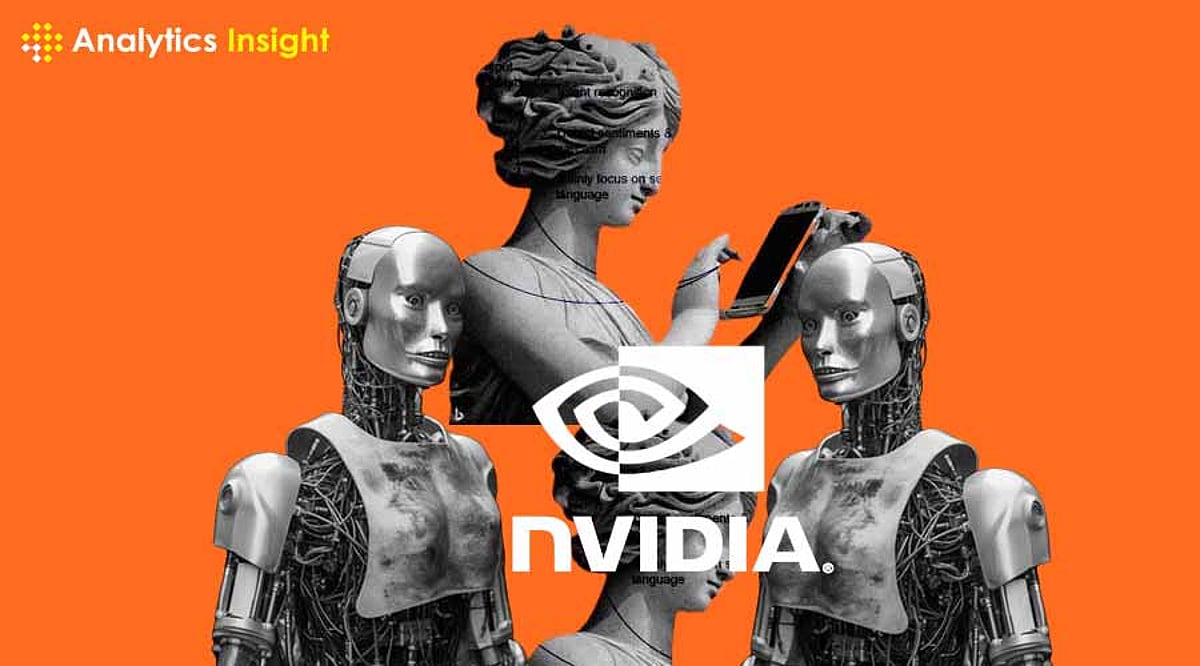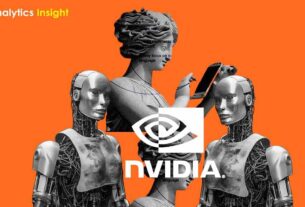Nvidia has officially released its open-source foundation model for artificial intelligence, Groot N1 (Groot N1), designed to accelerate the development of humanoid robotics. Unveiled at the company’s annual GPU Technology Conference (GTC) 2025 in San Jose, California, on March 18, 2025, the announcement positions Groot N1 as a cornerstone in Nvidia’s broader push into autonomous, AI-powered robotics. Nvidia’s keynote underscored a bold vision for the field with CEO Jensen Huang proclaiming, “The age of generalist robotics is here.” He argued that Groot N1, complemented by new data-generation capabilities and robot-learning frameworks, will spur rapid innovation across humanoid robotics and transform AI-driven automation. The launch marks a significant step in the company’s strategy to fuse open-source AI foundations with practical robotics applications, aiming to shorten development cycles and broaden the accessibility of advanced robotic intelligence.
Groot N1: Open-source foundation model for humanoid robotics
Groot N1 is introduced as a pre-trained AI foundation model that can be further post-trained by developers to tailor it to specific robotic tasks and environments. The model rests on Nvidia’s broader philosophy of building adaptable, scalable AI tools that can be specialized for real-world use cases while maintaining a common, interoperable core. According to Nvidia, Groot N1 was trained on a combination of existing real-world datasets and synthetically generated data. This dual-source training approach is designed to help robots learn from a wide range of scenarios, improving their ability to generalize from training to deployment in dynamic environments.
The concept of a foundation model in robotics implies a broad, versatile base that can be adapted across different robot platforms, task domains, and use cases. Groot N1’s open-source nature invites developers, researchers, and industry participants to extend, refine, and re-purpose the model for varied robotic applications. This openness is intended to foster collaboration, accelerate validation across domains, and create an ecosystem where improvements by one group can propagate quickly to others. By leveraging post-training capabilities, developers can align Groot N1 with particular robot hardware configurations, control schemas, perception systems, and manipulation tasks, enabling more rapid deployment without waiting on bespoke, ground-up model development.
The implications of Groot N1’s training approach are multifaceted. First, the inclusion of synthetic data aims to address gaps in real-world data collection, enabling more robust learning in edge cases that are difficult to capture in natural environments. Synthetic data can simulate rare but critical scenarios—such as heavy occlusions, complex lighting, or unusual object configurations—helping robots handle anomalies with greater confidence. Second, the combination of real and synthetic data supports more comprehensive pre-training, followed by task-specific fine-tuning. This can reduce time-to-value for robotics deployments, particularly in manufacturing, logistics, healthcare, and service robotics where safety considerations and regulatory compliance may require extensive testing before real-world operation.
In terms of platform strategy, Groot N1 is positioned within Nvidia’s broader robotics ecosystem, which includes software tools and frameworks designed to facilitate end-to-end robot development. The aim is to provide a coherent stack that integrates with hardware accelerators, simulation environments, perception pipelines, planning modules, and control systems. The open-source nature of Groot N1 is designed to invite third-party contributions, improvements, and validated deployments, while Nvidia’s software and hardware stack supports scalable training, simulation, and real-time inference.
As a foundational model, Groot N1 is intended to be the starting point for a wide spectrum of robotic tasks. Its design anticipates post-training customization to align with the specific needs of different robots and industry contexts. This could include tailoring perception modules to recognize a particular set of tools in a factory, refining manipulation strategies for delicate objects, or adapting coordination across multi-robot systems. The goal is to enable developers to harness a general-purpose cognitive base and guide it toward reliable, economical operation in real-world settings, reducing the need for bespoke AI development from scratch for each new robotics project.
To summarize, Groot N1’s core proposition rests on three pillars: (1) an open-source foundation model engineered for humanoid robotics, (2) a training regime that blends real-world data with synthetic data for broader generalization, and (3) post-training capabilities that allow developers to customize the model for their specific robotic applications and environments. Taken together, these elements are designed to shorten development cycles, expand the scope of robotics deployments, and catalyze a new wave of AI-powered automation across industries.
The dual-system architecture: slow-thinking and fast-thinking for robots
A central technological feature Nvidia emphasizes for Groot N1 is its dual-system architecture that mimics two modes of human cognitive processing. Nvidia describes the architecture as enabling robots to think in two distinct ways, a conceptual mapping inspired by cognitive science: a slow-thinking system and a fast-thinking system. This dual approach aims to balance deep reasoning and rapid real-time action, a combination that is particularly valuable for humanoid robots operating in complex, dynamic environments.
The slow-thinking system is designed to support perception and reasoning. It provides the capacity to interpret sensory input, evaluate context, deliberate on potential actions, and weigh outcomes before acting. In practical terms, this means a robot can process visual, tactile, proprioceptive, and other perceptual signals to form a coherent understanding of its surroundings. It can analyze potential plans, assess risks, and select actions that optimize long-term objectives, such as safety, efficiency, and task success. This system is particularly valuable in scenarios that require deliberate, principled decision-making, where quick, reflexive responses might lead to suboptimal or unsafe outcomes.
The fast-thinking system, in contrast, enables quick real-time processing to drive immediate action. It handles rapid motor control, obstacle avoidance, object manipulation, and other time-sensitive tasks that require instantaneous responses. This system is designed to convert perceptual insights into swift, robust actions, allowing robots to interact with their environment smoothly, adjust to sudden changes, and perform tasks with a high degree of agility.
By integrating slow-thinking and fast-thinking processes, Groot N1 aspires to deliver a more holistic robot cognition model. The slow-thinking pathway ensures thoughtful planning, scenario analysis, and careful decision-making, while the fast-thinking pathway supports real-time control and responsive operation. The interaction between these two modes is intended to create a robust loop: perception informs reasoning; reasoning informs planning; planning guides action, and real-time feedback refines perception and future decisions. This closed-loop dynamic is expected to enhance robots’ ability to engage with complex surroundings, execute precise manipulations, and adapt to new tasks with minimal human intervention.
For humanoid robotics, such a dual-system approach could translate into several tangible capabilities. In manufacturing settings, robots could plan multi-step assembly tasks in advance, anticipate potential consolidation issues, and adjust on the fly when a component is misaligned. In hospital or eldercare contexts, robots could reason about patient needs and safety considerations while still responding rapidly to urgent requests or emergencies. In service robotics, the combination could support smoother human-robot interactions, with the system understanding nuanced human cues and translating them into appropriate, timely actions while maintaining a framework of safety and reliability.
From a development and deployment perspective, the dual-system architecture implies that Groot N1 is not merely a single, monolithic inference engine. Instead, it is framed as a composite cognitive system that orchestrates multiple processing streams. This design can facilitate modular development, allowing engineers to optimize one component (for example, perception modules, planning algorithms, or control loops) without destabilizing others. It also supports incremental improvements: enhancements to the slow-thinking reasoning layer can propagate to better long-horizon planning, which in turn improves how the fast-thinking system executes actions in real time.
In practice, the integration of slow-thinking and fast-thinking within Groot N1 aims to reduce brittle behavior when robots encounter unanticipated circumstances. The slow-thinking process can reason about uncertainties, plan safe contingencies, and select actions that preserve stability, while the fast-thinking process can respond to moment-to-moment dynamics like moving objects, changing light conditions, or sudden obstacles. The end result, if realized effectively, is a humanoid robot capable of both principled reasoning and agile execution—an essential combination for broader adoption across industries that demand reliability, safety, and efficiency.
Additionally, this dual-system framework can support improved human-robot collaboration. When a human operator introduces a new task or adjusts a goal, Groot N1’s slow-thinking layer could interpret the instruction, assess the broader context, and generate a robust plan. The fast-thinking system could then execute the plan with the necessary speed, while maintaining alignment with safety constraints and human expectations. Over time, this could reduce the need for extensive hand-tuning and reprogramming, enabling more adaptable, cooperative, and responsive robots that can operate within human-centric workflows.
In essence, Groot N1’s slow-thinking and fast-thinking architecture embodies a balanced cognitive design intended to deliver both strategic, reasoned behavior and nimble, practical execution. This combination is anticipated to help humanoid robots navigate real-world environments with greater competence, resilience, and autonomy, addressing long-standing challenges in perception, planning, and control. As Nvidia positions this architecture within its broader robotics stack, observers are watching how smoothly these two cognitive streams can be integrated, how robust the system remains under diverse conditions, and how effectively developers can fine-tune the model to meet exacting industrial requirements.
Subsection: Architectural integration and real-world implications
- The slow-thinking pathway emphasizes interpretability, scenario analysis, and robust decision-making with an emphasis on safety and long-range planning.
- The fast-thinking pathway prioritizes latency-sensitive actions, real-time motor control, and agile responses to environmental dynamics.
- The interaction between the two pathways aims to deliver stable behavior in the face of uncertainty, enabling robots to balance caution with responsiveness.
- In practice, this dual-system approach may reduce error rates in perception, improve task success in complex manipulation, and enable more natural human-robot collaboration.
Overall, Groot N1’s dual-system architecture represents a deliberate attempt to bridge the gap between high-level cognitive reasoning and low-level motor execution in robotics. If implemented effectively, it could offer a robust framework for advancing humanoid robotics toward more capable, autonomous, and adaptable systems that can operate across a wide spectrum of industries and applications.
The broader robotics landscape: competition, strategies, and momentum
The release of Groot N1 comes amid a rapidly intensifying race in humanoid robotics. The market is witnessing a growing constellation of players including X1 and Figure along with major tech ecosystems from industry giants like Google DeepMind and Nvidia. While a variety of companies are pursuing humanoid prototypes, the differing strategic approaches reflect broader philosophies about how to achieve practical, scalable, and safe robotic intelligence.
X1 and Figure are examples of teams actively pursuing humanoid robotics at scale. Their efforts focus on advancing hardware platforms, mechanical design, perception stacks, and control systems aimed at real-world operation. These companies are testing how humanoid robots can be deployed in real tasks, driving improvements in mobility, dexterity, perception, and decision-making.
On the other side of the equation, Google DeepMind and Nvidia represent two influential tech powerhouses bringing AI technology to bear on robotic platforms. DeepMind’s Gemini Robotics initiative, for example, is presented as a collection of AI models designed to enhance robots’ precision and agility when faced with complex queries. Nvidia’s Groot N1 release aligns with its broader strategy of combining hardware acceleration with software frameworks to support advanced AI robotics. By delivering an open-source foundation model, Nvidia signals a preference for openness and collaborative development alongside its hardware ecosystem.
Groot N1 also positions Nvidia to compete by enabling more sophisticated cognitive capabilities and autonomous decision-making in robots. The combination of a pre-trained, adaptable foundation model with data-generation capabilities and post-training flexibility is designed to accelerate the pace at which robots can be taught to understand their environment, reason about tasks, and act in ways that align with human goals. This approach contrasts with models that rely on closed systems with limited customization or bespoke AI development for each robot platform.
From Nvidia’s perspective, the strategic value of Groot N1 lies in creating a robust, scalable pipeline for robotic AI development. By providing an open-source base, synthetic data frameworks, and simulation tools within a cohesive stack, Nvidia aims to help developers move more rapidly from concept to deployment. The company’s emphasis on simulation and synthetic data is particularly salient: it addresses a critical bottleneck in robotics—the cost, time, and safety concerns inherent in real-world data collection. With high-quality synthetic data and realistic simulations, developers can train, validate, and iterate more efficiently before moving to physical systems, reducing risk and accelerating progress.
Another dimension of Nvidia’s strategy is the potential for cross-pollination across industries. If Groot N1 proves effective, it could become a common cognitive substrate for a wide range of robotic applications—from manufacturing automation and warehouse logistics to healthcare assistance and service robotics. The open-source nature of the model could invite contributions from universities, startups, and established enterprises alike, accelerating feature enhancements, domain adaptations, and new use cases. This ecosystem approach may lead to more rapid convergence around best practices, standardized interfaces, and interoperable components, which in turn supports broader industry adoption.
In summary, Groot N1’s introduction signals a pivotal moment in the robotics landscape. It reflects Nvidia’s attempt to couple open, adaptable AI foundations with powerful hardware and software tooling to drive a more elastic, general-purpose approach to humanoid robotics. The evolving competitive dynamics—between open platforms and closed, proprietary systems—will influence how quickly advanced robotics become integrated into daily operations across sectors. Observers will be watching how Groot N1 and similar initiatives can scale, how robust they prove in diverse environments, and how they address safety, reliability, and regulatory considerations at scale.
Subsection: The role of simulation and data in the competitive mix
- Simulation frameworks offer a risk-free, scalable environment to test perception, planning, and manipulation under varied conditions.
- Synthetic data complements real-world data to broaden coverage of rare and extreme scenarios that are hard to capture experimentally.
- Open-source foundations invite a broader researcher and developer base to contribute improvements and domain-specific adaptations.
- The combination of these elements reduces time-to-market for robotics products and can help startups and enterprises alike to validate ideas quickly before costly physical trials.
The future of humanoid robotics: pathways, promises, and challenges
Nvidia’s announcement frames Groot N1 as a meaningful step toward the broader dream of generalist humanoid robots capable of understanding and interacting with the world across a wide range of tasks. The company argues that Groot N1, along with its data-generation frameworks and robot-learning tools, will catalyze a wave of innovation, accelerate AI-powered automation, and transform how robots integrate into human workflows. This vision builds on the premise that a robust, adaptable foundation model can serve as a common cognitive substrate upon which domain-specific capabilities are layered, enabling rapid deployment across industries and application areas.
The future trajectory of humanoid robotics, as implied by Groot N1, envisions several core developments:
- Accelerated development cycles: With an open-source foundation model and post-training capabilities, developers can tailor robotics systems for new tasks without starting from scratch, reducing time-to-value.
- Widespread adoption across sectors: The ability to adapt a common cognitive base to diverse environments—manufacturing floors, healthcare settings, logistics networks, and service scenarios—promises broader deployment of humanoid robots beyond narrow, tightly scoped tasks.
- Enhanced autonomy and decision-making: Groot N1’s integrated slow-thinking and fast-thinking architecture is designed to support more autonomous, context-aware robots that can reason about actions, anticipate outcomes, and execute tasks with minimal human intervention while maintaining safety and alignment with user goals.
- Improved learning through synthetic data and simulation: The proposed framework for synthetic data generation and high-fidelity simulations can accelerate training and validation, helping robots generalize to real-world variability more effectively and safely.
- Community-driven innovation: The open-source model invites contributions from researchers, developers, and industry practitioners, potentially expanding the breadth of applications, improving robustness, and enabling localized adaptations for specific markets or regulatory contexts.
However, realizing these promises also presents notable challenges and considerations:
- Safety, reliability, and governance: As humanoid robots gain greater autonomy, ensuring robust safety mechanisms, transparent decision-making, and effective governance will be critical. Regulatory frameworks, safety certifications, and rigorous testing protocols will shape how quickly such systems can be deployed in sensitive environments.
- Sim-to-real transfer and realism gaps: While synthetic data and simulations can enhance learning, the transfer from simulated to real-world performance remains a central hurdle. Bridging the sim-to-real gap will require careful domain randomization, accurate physics modeling, and continuous validation against real-world outcomes.
- Ethical and societal implications: The introduction of more capable humanoid robots raises questions about labor displacement, privacy, accountability for robotic actions, and ensuring equitable access to automation benefits. Responsible deployment will require thoughtful consideration of these issues alongside technical progress.
- Data quality and bias management: Training on both real and synthetic data entails risks of bias or misrepresentation if data sets are not representative or comprehensive. Ongoing data auditing and bias mitigation will be important to maintain reliable, fair outcomes across tasks and environments.
- Interoperability and standardization: With multiple players contributing to open platforms and ecosystems, establishing interoperable interfaces and standards will be crucial to maximize the value of shared foundations and reduce fragmentation.
Subsection: Industry-specific implications and potential use cases
- Manufacturing and logistics: Generalist humanoid robots could assist with assembly, material handling, quality control, and inventory management, leveraging Groot N1’s dual-cognition framework to plan operations and perform precise manipulations under varying conditions.
- Healthcare and eldercare: In controlled clinical or residential settings, robots could support patient care, transport supplies, and assist clinicians, balancing careful planning with rapid response to urgent needs.
- Service and hospitality: Humanoid robots could interact with customers, deliver items, and assist staff, applying nuanced understanding of human cues and adapting to changing service contexts.
- Agriculture and outdoor environments: Robotic platforms designed to operate outside controlled indoor spaces could benefit from robust perception and adaptive manipulation capabilities, enabling tasks such as monitoring and targeted interventions.
In the long run, Groot N1’s open-source foundation model could become a foundational element for a broad robotics ecosystem, enabling more rapid experimentation, prototyping, and deployment across a spectrum of environments. Yet the path to universal, safe, and cost-effective humanoid robotics will require sustained collaboration among researchers, developers, policy-makers, industry leaders, and the public to address technical hurdles and societal considerations.
Conclusion
Nvidia’s introduction of Groot N1 at GTC 2025 marks a notable milestone in the evolution of humanoid robotics and AI-powered automation. By presenting Groot N1 as an open-source foundation model geared toward humanoid robotics, combined with a dual-system architecture that integrates slow-thinking and fast-thinking processing, Nvidia signals a strategic push to accelerate innovation and broaden access to advanced robotic intelligence. The model’s training approach—blending real-world data with synthetic data—and its post-training customization capabilities offer a pathway for developers to adapt the foundation model to a wide array of robotic tasks and environments. The emphasis on simulation frameworks and blueprints for synthetic data further highlights a commitment to reducing the barriers to entry for robotics development and to speeding up AI-powered robotics across industries.
As the robotics landscape grows increasingly competitive—with players like X1, Figure, and Google DeepMind pursuing similar objectives—Groot N1 positions Nvidia to influence how generalist capabilities are designed, shared, and deployed. The combination of an open-source cognitive base, a scalable data-generation ecosystem, and a robust hardware-software stack could help drive broader adoption of humanoid robots, provided safety, reliability, and ethical considerations are adequately addressed. The coming years will reveal how effectively Groot N1 translates into real-world performance, how developers leverage its post-training pathways, and how the broader ecosystem around simulation, synthetic data, and collaboration evolves to support the ongoing dream of versatile, autonomous humanoid robots that can operate safely and productively across diverse sectors.



